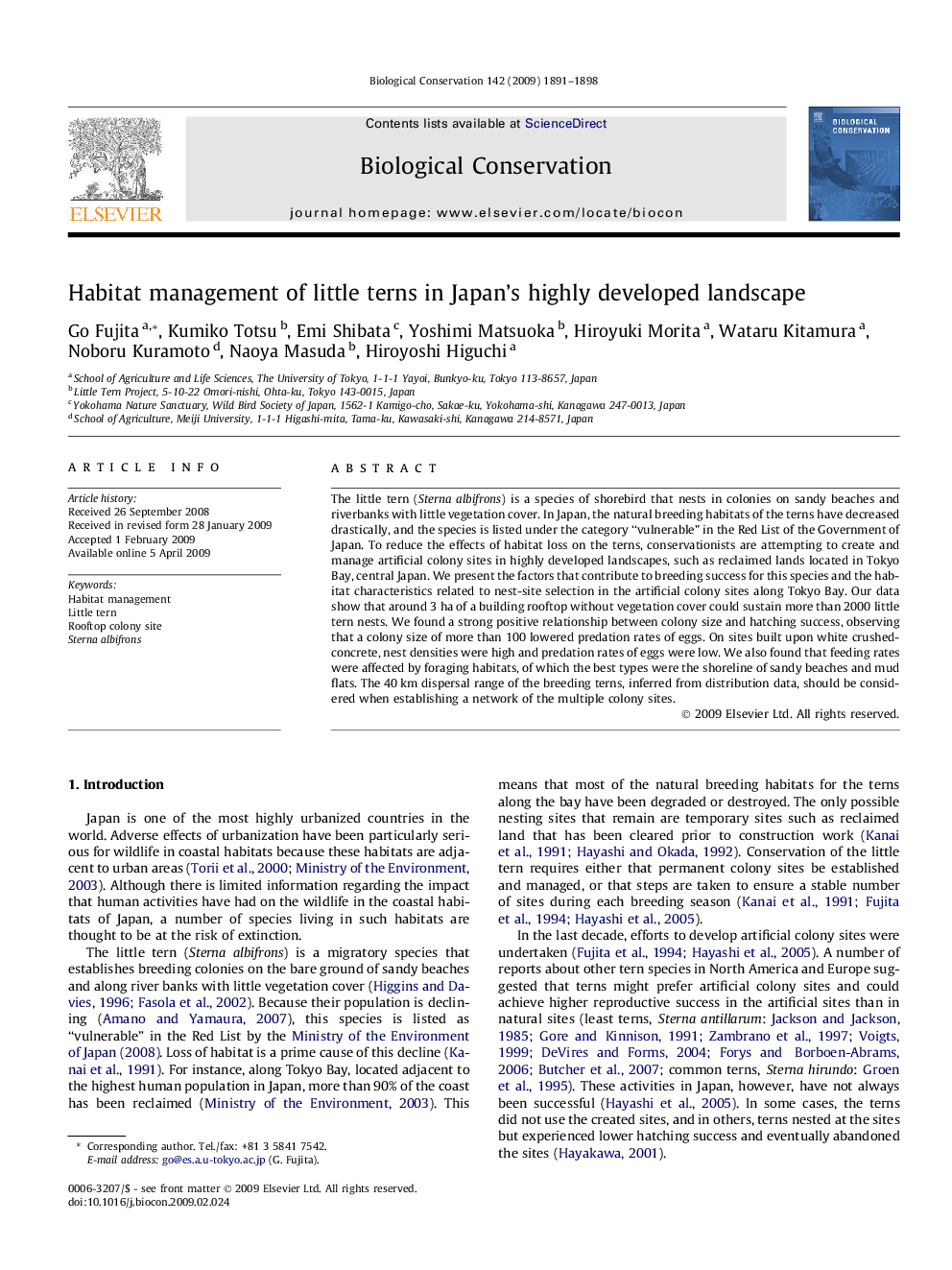| Article ID | Journal | Published Year | Pages | File Type |
|---|---|---|---|---|
| 4386533 | Biological Conservation | 2009 | 8 Pages |
Abstract
The little tern (Sterna albifrons) is a species of shorebird that nests in colonies on sandy beaches and riverbanks with little vegetation cover. In Japan, the natural breeding habitats of the terns have decreased drastically, and the species is listed under the category “vulnerable” in the Red List of the Government of Japan. To reduce the effects of habitat loss on the terns, conservationists are attempting to create and manage artificial colony sites in highly developed landscapes, such as reclaimed lands located in Tokyo Bay, central Japan. We present the factors that contribute to breeding success for this species and the habitat characteristics related to nest-site selection in the artificial colony sites along Tokyo Bay. Our data show that around 3Â ha of a building rooftop without vegetation cover could sustain more than 2000 little tern nests. We found a strong positive relationship between colony size and hatching success, observing that a colony size of more than 100 lowered predation rates of eggs. On sites built upon white crushed-concrete, nest densities were high and predation rates of eggs were low. We also found that feeding rates were affected by foraging habitats, of which the best types were the shoreline of sandy beaches and mud flats. The 40Â km dispersal range of the breeding terns, inferred from distribution data, should be considered when establishing a network of the multiple colony sites.
Keywords
Related Topics
Life Sciences
Agricultural and Biological Sciences
Ecology, Evolution, Behavior and Systematics
Authors
Go Fujita, Kumiko Totsu, Emi Shibata, Yoshimi Matsuoka, Hiroyuki Morita, Wataru Kitamura, Noboru Kuramoto, Naoya Masuda, Hiroyoshi Higuchi,
